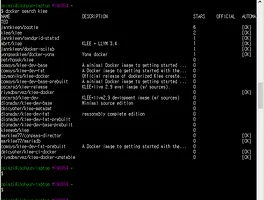NIST(National Institute of Standards and Technology) : 미국국립표준기술연구소
MITRE (마이터)
What is NVD?
NVD is the U.S. government repository of standards based vulnerability management data. This data enables automation of vulnerability management, security measurement, and compliance
CVE is a list of information security vulnerabilities and exposures that aims to provide common names for publicly known cyber security issues. The goal of CVE is to make it easier to share data across separate vulnerability capabilities (tools, repositories, and services) with this "common enumeration."
What is CWE? What is a "software weakness"?
Targeted at both the development community and the community of security practitioners, Common Weakness Enumeration (CWE™) is a formal list or dictionary of common software weaknesses that can occur in software's architecture, design, code or implementation that can lead to exploitable security vulnerabilities. CWE was created to serve as a common language for describing software security weaknesses; serve as a standard measuring stick for software security tools targeting these weaknesses; and to provide a common baseline standard for weakness identification, mitigation, and prevention efforts.
Software weaknesses are flaws, faults, bugs, vulnerabilities, and other errors in software implementation, code, design, or architecture that if left unaddressed could result in systems and networks being vulnerable to attack. Example software weaknesses include: buffer overflows, format strings, etc.; structure and validity problems; common special element manipulations; channel and path errors; handler errors; user interface errors; pathname traversal and equivalence errors; authentication errors; resource management errors; insufficient verification of data; code evaluation and injection; and randomness and predictability.
The NVD is the CVE dictionary augmented with additional analysis, a database, and a fine-grained search engine. The NVD is a superset of CVE. The NVD is synchronized with CVE such that any updates to CVE appear immediately on the NVD.
What is the relationship between CWE and CVE?
MITRE began working on the issue of categorizing software weaknesses as early 1999 when it launched the Common Vulnerabilities and Exposures (CVE®) List. As part of building CVE, MITRE's CVE Team developed a preliminary classification and categorization of vulnerabilities, attacks, faults, and other concepts beginning in 2005 to help define common software weaknesses. However, while sufficient for CVE those groupings were too rough to be used to identify and categorize the functionality offered within the offerings of the code security assessment industry. The CWE List was created to better address those additional needs.
What is the relationship between CWE and NVD?
The U.S. National Vulnerability Database (NVD) is a federal government repository of standards-based vulnerability management data. This data enables automation of vulnerability management, security measurement, and compliance (e.g., FISMA). NVD integrates CWE into the scoring of Common Vulnerabilities and Exposures (CVE®) entries, upon which NVD is built, by providing a cross section of the overall CWE structure. NVD analysts score CVEs using CWEs from different levels of the hierarchical structure. This allows analysts to score CVEs at both a fine and coarse granularity, which is necessary due to the varying levels of specificity possessed by different CVEs.


